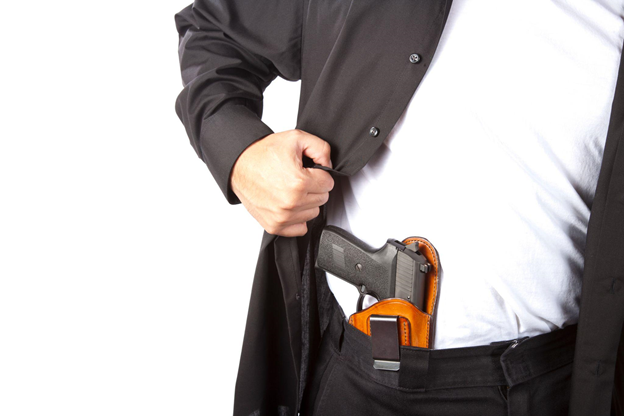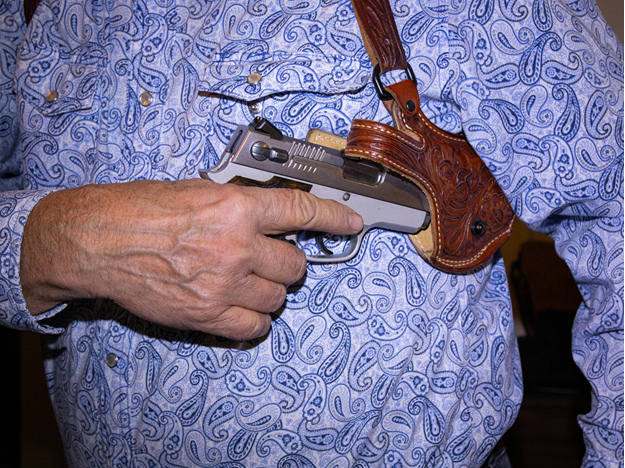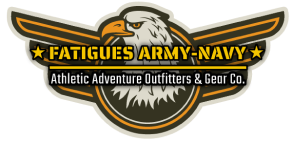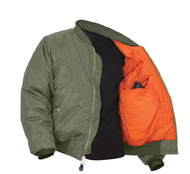Beyond the Concealed Carry Jacket: Pros and Cons of the Major Carry Positions
Posted by: Fatigues Army Navy Outdoor Gea on 21st May 2025
A concealed carry jacket makes it possible for most people to comfortably carry their preferred defensive handgun through at least 3 seasons of the year.
But what about those times when you don’t want to wear a jacket, or it’s too hot? You don’t leave off on preparedness just because the weather shifts.
With that said, here are 5 of the most popular carry positions, along with their relative advantages and disadvantages.
Inside Waistband (IWB)

Inside waistband carry, also known as IWB, is likely the most popular concealed carry option. In IWB carry, your gun is holstered inside your waistband on the dominant side of your body.
One of the greatest advantages to IWB carry is the ease of concealability. For most people, concealing a handgun against your hip inside your waistband is easy and practical, even in some cases for a full–size handgun. Carrying in this manner makes it unlikely that the gun will “print” or show through your clothing.
The IWB carry methodology also allows for a very natural, intuitive draw, as well as excellent access to your handgun, which will be naturally situated right by your dominant hand.
Really, there aren’t many drawbacks to the IWB method. One of the only real disadvantages is that, if you tuck your shirt in, the gun is more likely to print.
Outside Waistband (OWB)
Outside waistband carry is the only non-concealed method that will be addressed here, and it is also very popular, perhaps just after IWB carry.
In the OWB configuration, your gun will be on your hip, on the dominant side, just outside your waistband - generally in a holster mounted on your belt.
This makes the advantages of OWB similar to those of IWB. Your gun will be in a location that’s easy to access, and offers intuitive draw.
But there are other advantages. One of the main ones is that you will not be limited by the size of the gun since you don’t need to worry about printing. You can carry a full-sized handgun comfortably outside the waistband and won’t be limited by your clothing.
The only real drawback is that OWB is mostly an open-carry proposition, unless you are carrying under a jacket, so be aware of that.
Shoulder Carry (Cross Draw)

Shoulder carry is another relatively popular concealed carry methodology. Also known as cross draw, shoulder carry offers an equal balance of advantages and disadvantages.
One of the main advantages of shoulder carry is that it enables you to carry a larger, heavier gun with less fatigue and less risk of printing. A large gun can naturally be carried under your arm or at your side for longer with less fatigue, not to mention shoulder carry holsters do a good job of distributing the weight of the gun without making you feel lopsided. They’re also arranged so that you can fairly easily conceal a larger handgun platform.
Another advantage of shoulder carry is that it enables easy access to the firearm while you are seated - something that not all other carry options offer.
But there are some significant disadvantages associated with shoulder carry as well. One is that if you’re on the ground or pressed up against a wall, it can be very hard to draw. You’ll also need to wear a jacket in order to prevent the gun from printing.
Another is that when you draw you can very easily unintentionally muzzle yourself - your torso or your non-dominant arm - so you must be very careful and train diligently so you can draw responsibly without muzzling unintended targets.
Small-of-Back Carry
Small-of-back carry is one of the least popular concealed carry positions, and that’s likely because it has more cons than pros. All the same, it’s worth covering what these are.
The biggest advantage of small-of-back carry is that it’s comfortable, especially for people that are standing for prolonged periods of time. Placing the weight at the small of your back helps distribute it and decrease fatigue; but this method might not be comfortable for those that spend a lot of time sitting. If the small of your back is pressed against anything - like a chair - it’ll be uncomfortable to practice this carry method for any prolonged period of time.
Now let’s cover the disadvantages of small-of-back carry. For one, drawing is slow and requires a lot of flexibility and range of motion. If you are pressed against a wall or laying down, it will become nearly impossible to draw. Also, as with shoulder carry, drawing from the small of your back invokes a high risk of muzzling yourself or other unintended targets.
Appendix Carry
Appendix carry is like IWB, but slightly different in the sense that the holster will ride a little above your waistband, sort of over your appendix, hence the name.
It’s a slightly controversial carry method as some users find it uncomfortable. However, for others, they argue that it is actually more comfortable, especially when seated for prolonged periods of time.
Like IWB carry, appendix carry makes concealment fairly easy, even with relatively large handguns, and also offers uncompromised, quick access to the gun, enabling a smooth, quick, easy draw.
Another great advantage is that your hands will need to cover a shorter distance when drawing, helping to get you on target faster.
As for disadvantages, there are no big ones; a large gun may print, but that can be mitigated by opting for a compact or subcompact handgun that will prove easier to conceal.
Here for a New Concealed Carry Jacket?
All of these carry methods may be serviceable for you if you plan on carrying concealed without a jacket; however, a concealed carry jacket also represents a solution if you don’t feel like getting a separate holster and adopting a different carry method. Shop our collection of concealed carry jackets and accessories here and get in touch with us if you have any questions.

